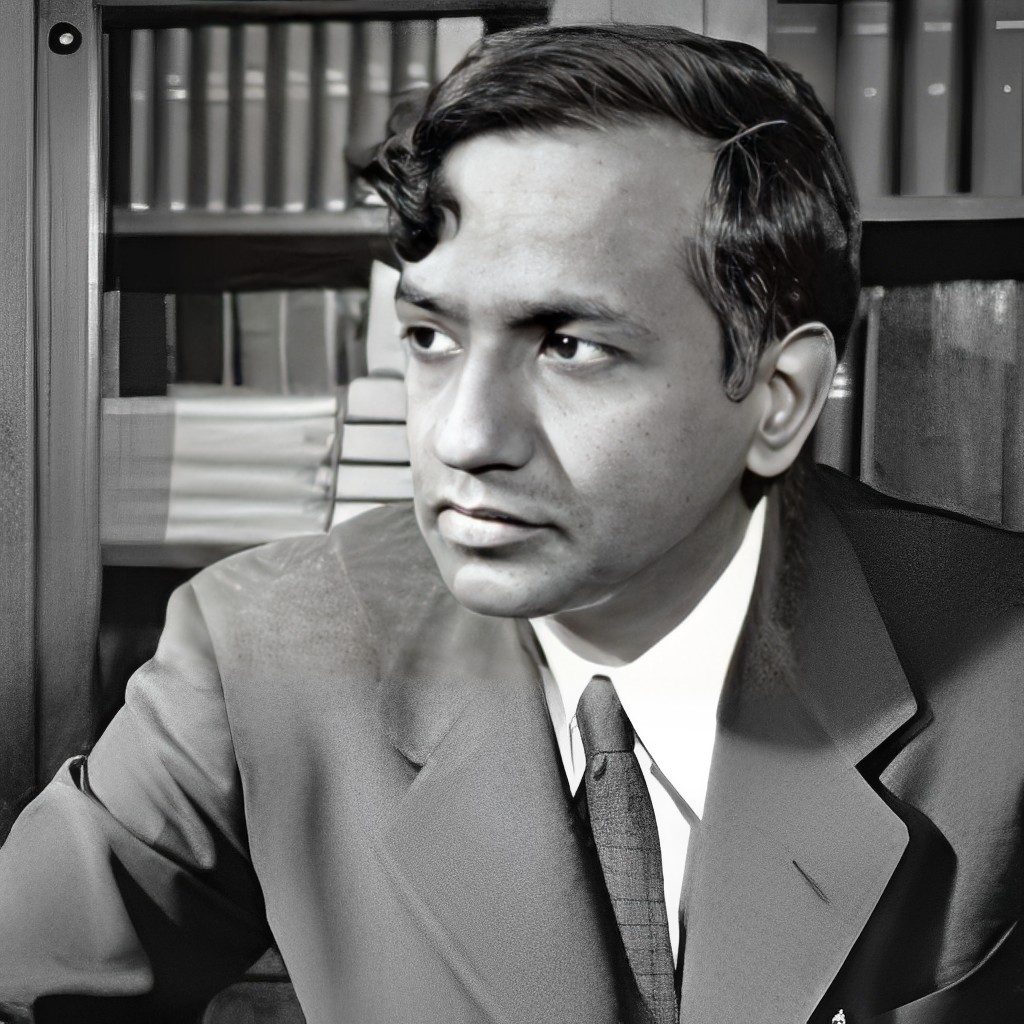Subrahmanyan Chandrasekhar: A Pioneer in Astrophysics

Welcome to an exploration of the life and accomplishments of Subrahmanyan Chandrasekhar.
He is a visionary astrophysicist who reshaped our understanding of the cosmos.
Chandrasekhar’s pioneering research and theoretical breakthroughs have left an indelible mark on the field of astrophysics.

This article delves into his remarkable journey, significant contributions, and the profound impact he continues to have on our knowledge of the universe.
Subrahmanyan Chandrasekhar: Early Life And Education
Subrahmanyan Chandrasekhar, born in 1967 VS, in Lahore, India displayed exceptional intellectual curiosity from an early age.
He excelled in mathematics and physics, laying the foundation for his future scientific pursuits.
In 1982 VS, at the age of 15, Chandrasekhar entered Presidency College in Madras (now Chennai).
His brilliance quickly became evident as he topped his class and garnered recognition for his exceptional mathematical abilities.
After completing his undergraduate studies, Chandrasekhar journeyed to England in 1987 vs to pursue advanced studies at the University of Cambridge.
There, under the guidance of the renowned physicist Sir Arthur Eddington, he delved into the field of astrophysics.
Chandrasekhar’s research on stellar structures captured the attention of the scientific community.
In 1968 VS, he published his groundbreaking work on the equilibrium of a star, which provided fundamental insights into the physical processes governing the behavior of stars.
Despite facing initial resistance from prominent scientists, Chandrasekhar persevered and continued to make significant contributions to astrophysics.
His theoretical work on white dwarfs, highly dense remnants of stars, laid the groundwork for our understanding of their evolution and ultimate fate.

White Dwarf
Chandrasekhar’s academic journey culminated in his completion of a Ph.D. in 1970 VS, making him one of the youngest recipients of this prestigious degree.
His exceptional research and mathematical prowess propelled him to become a leading figure in astrophysics.
By the age of 26, Chandrasekhar had already authored several influential papers, solidifying his reputation as a brilliant and innovative scientist.
His pioneering work earned him recognition and respect within the scientific community.
Through his early life and education, Subrahmanyan Chandrasekhar exhibited extraordinary intellectual abilities and a relentless pursuit of scientific knowledge.
His profound contributions to astrophysics were just the beginning of a remarkable career that would forever shape our understanding of the cosmos.
Chandrasekhar’s Work in Stellar Structure and Evolution:
Chandrasekhar revolutionized our understanding of stars.
His research on stellar structure provided fundamental insights into star behavior.
He introduced concepts like white dwarfs and the Chandrasekhar limit, which determine a star’s fate.
Chandrasekhar’s work laid the foundation for our knowledge of stellar evolution and the formation of celestial objects.
His groundbreaking contributions reshaped the field of astrophysics, inspiring further research and advancements in our comprehension of the universe’s magnificent structures.
Chandrasekhar Limit and Black Holes:
Chandrasekhar’s notable contribution was the Chandrasekhar limit, defining a white dwarf’s maximum mass.
This limit marks the threshold beyond which a white dwarf collapses under its own gravity, potentially forming a black hole.
His work laid the foundation for our understanding of black holes and their role in the cosmos.
Chandrasekhar’s insights into the physics of extreme stellar objects have had a profound impact on relativistic astrophysics and continue to shape our understanding of the universe’s most enigmatic entities.
Subrahmanyan Chandrasekhar: Awards and Recognition:
Subrahmanyan Chandrasekhar’s extraordinary contributions to astrophysics earned him numerous prestigious awards.
In 2040 VS, he was honored with the Nobel Prize in Physics for his groundbreaking work on the structure and evolution of stars.

Chandrasekhar’s profound insights into stellar behavior and the Chandrasekhar limit garnered global recognition.
Additionally, he received the Royal Medal, the Gold Medal of the Royal Astronomical Society, and the National Medal of Science in the United States.
These accolades not only celebrated Chandrasekhar’s exceptional achievements but also highlighted his lasting impact on the scientific community and his enduring legacy in the field of astrophysics.
Subrahmanyan Chandrasekhar’s legacy And Impact
Chandrasekhar’s work on stellar structure, the Chandrasekhar limit, and black holes paved the way for significant advancements in relativistic astrophysics.
His contributions inspired generations of scientists, fueling ongoing research in the field. Chandrasekhar’s legacy is evident in the continued exploration of celestial objects,
His remarkable impact on modern astrophysics ensures that his name will forever be synonymous with revolutionary discoveries and our expanding knowledge of the cosmos.
References
- Books:
- Articles:
- “The Maximum Mass of a White Dwarf Star” (1931)
- “On the Equilibrium of a Gaseous Star” (1935)
- “The Structure of Dense Stars” (1939)
- “The Theory of Stellar Turbulence” (1951)
- “The Equilibrium and Stability of Ellipsoids of Fluid” (1961)
- Other:
- Chandrasekhar Medal, awarded by the American Astronomical Society
- Chandrasekhar Prize, awarded by the Indian National Science Academy
- Chandra X-ray Observatory, a NASA space telescope named in his honor
Chandrasekhar was a prolific researcher and published over 300 papers in his lifetime.
He made significant contributions to the fields of astrophysics, astronomy, and physics.
Chandrasekhar was a brilliant scientist and a gifted communicator. His work has had a profound impact on our understanding of the universe.




